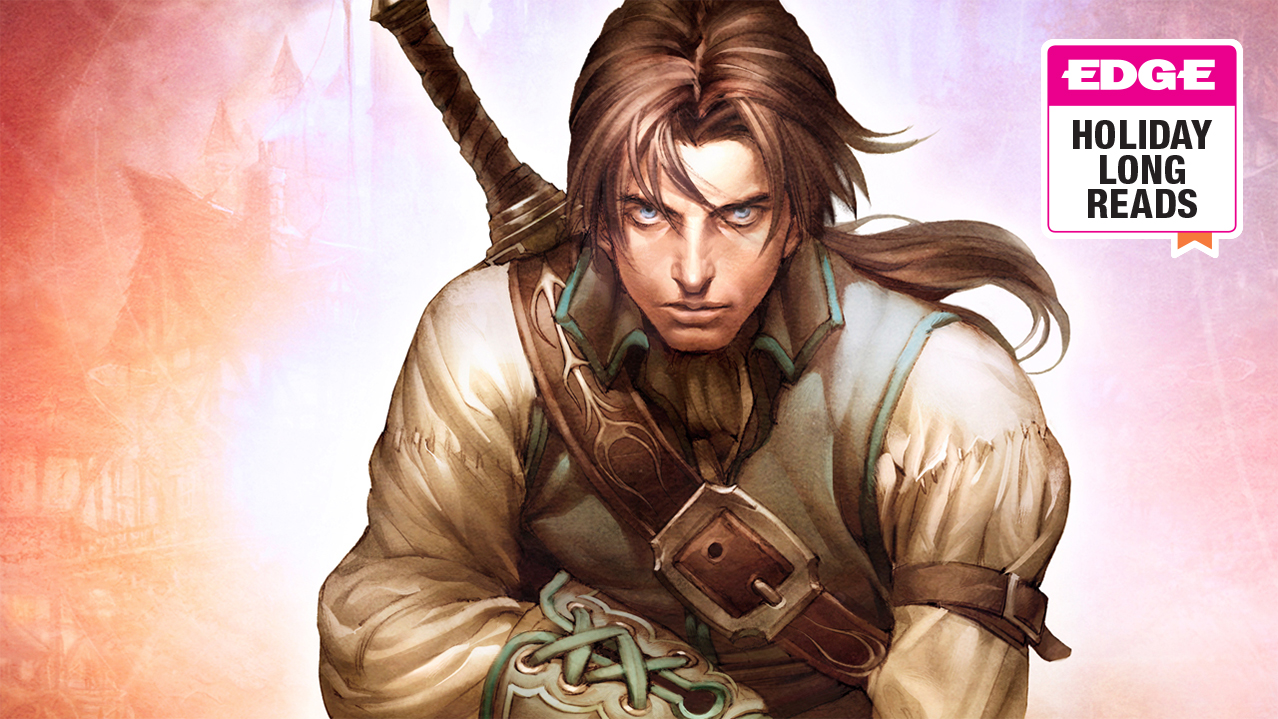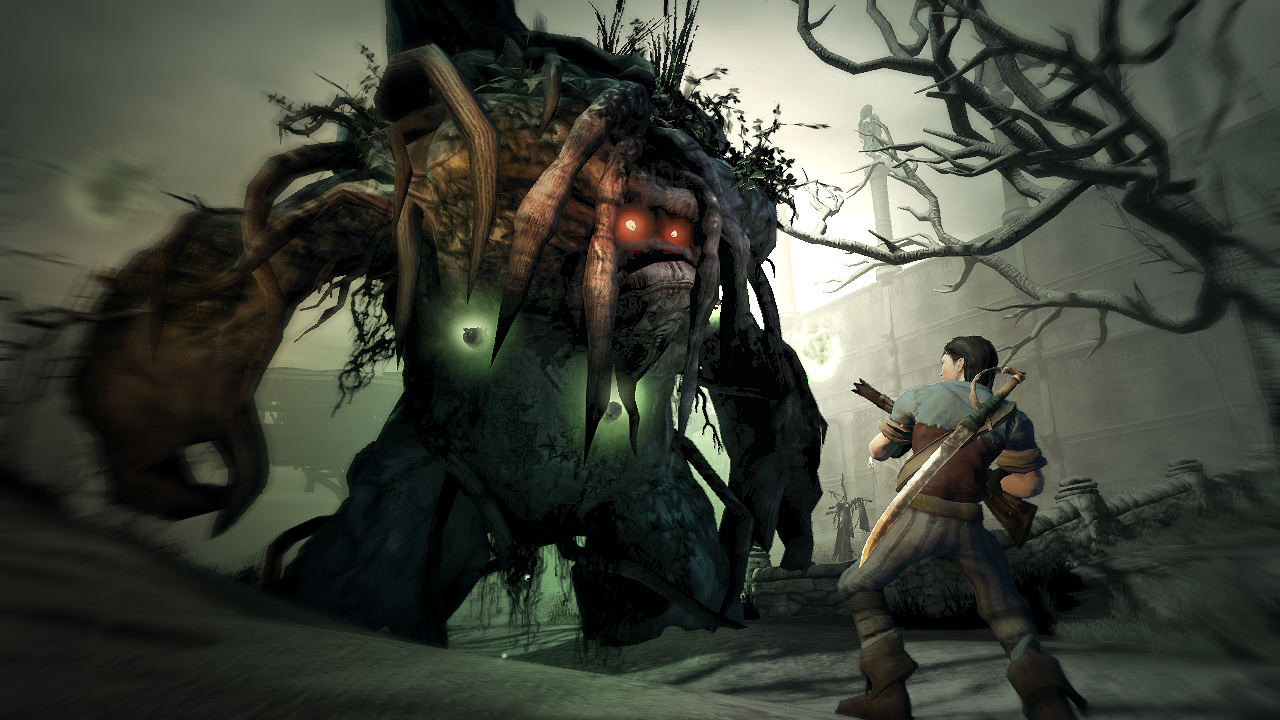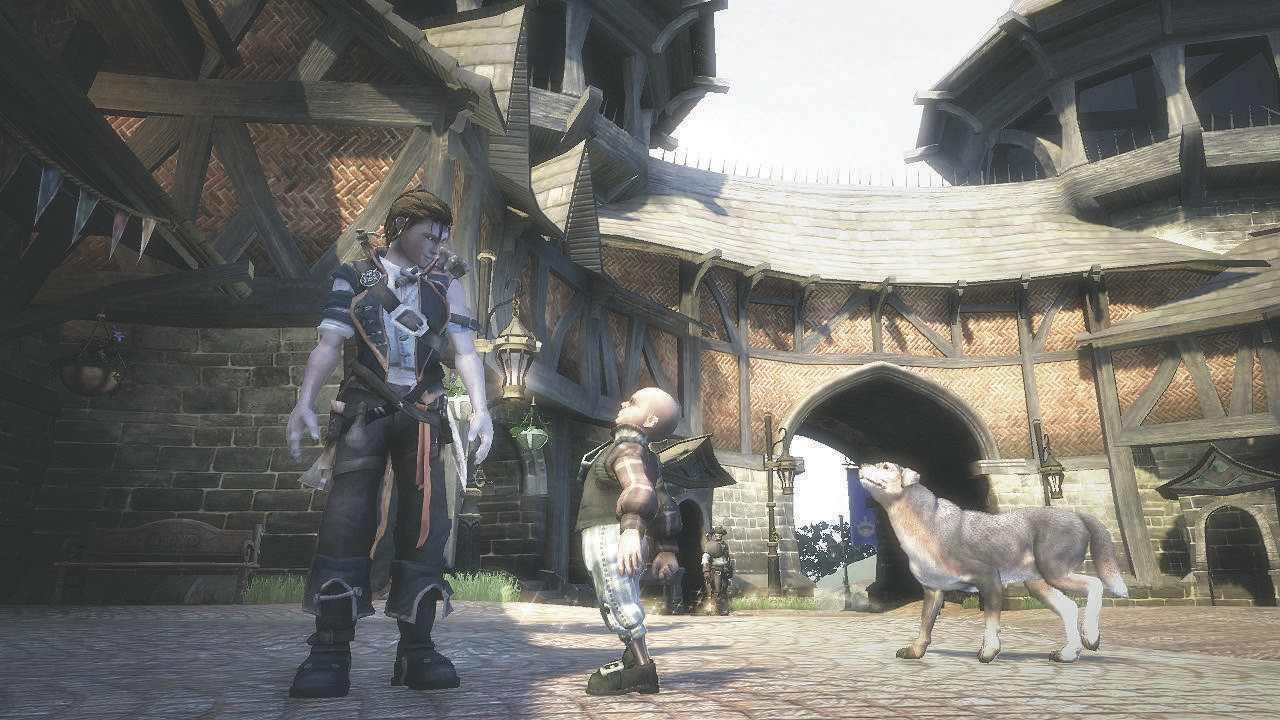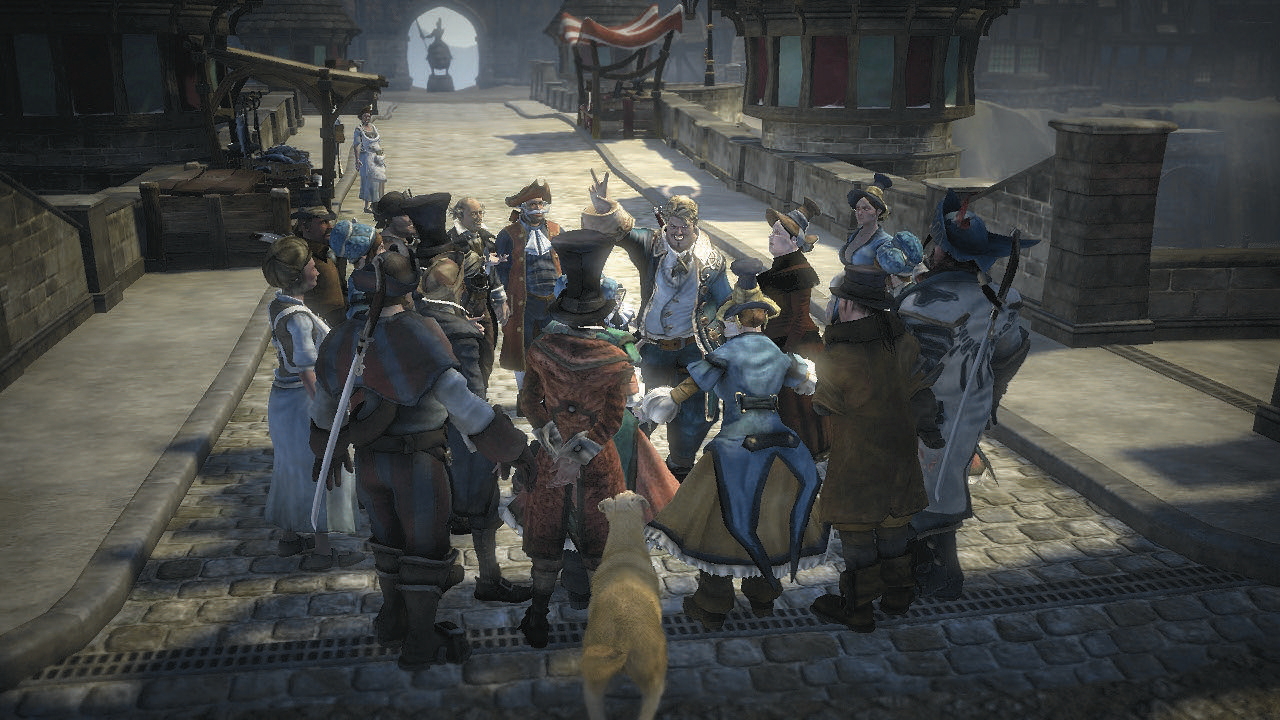Fable 2: how Xbox's most-ambitious exclusive game changed the rules for open-world interactivity
Breadcrumbs, Buffy and bucolic Britain: the story of Lionhead’s most magical Fable of all

Everyone remembers that promise. When Lionhead co-founder Peter Molyneux said Fable players would be able to plant an acorn and eventually see it flourish into a giant oak tree, his mouth was writing a cheque the game would never be able to cash. But if Xbox RPG Fable (2004) didn’t quite live up to Molyneux’s ambitious billing, the debut game from brothers Dene and Simon Carter and their team at Big Blue Box (which was subsumed into Lionhead) captured the hearts of players across the globe with its irresistible humour and a gorgeous world that, oak trees notwithstanding, responded to your actions. Its sales impressed publisher Microsoft, and a sequel was a cast-iron certainty.

Edge magazine is one of the most-respected and well-established voices in video-gaming, and you can subscribe in digital form for as little as $9 for three issues.
Fable II, however, got off to a slow start. “We were all pretty knackered after Fable,” Molyneux tells us. “We’d put an enormous amount of work into it, especially the team, and we were a bit burnt out.” Yet there was hardly a shortage of ideas on the table – as Simon recalls, more ideas didn’t make it into Fable than did. “Dene and I had been thinking about Fable for at least ten years before we started on it, and not necessarily in the most grounded of ways,” he says. “We were children, dreaming up a game about simulation, self-expression, magic, gothic horror and unintended consequences, who became young adults who didn’t know enough to know what was possible. That it ended as well as it did is a miracle, and a testament to an incredibly talented team.”
Some of those ideas made it into The Lost Chapters, an add-on which released a year later. While a smaller team worked on the DLC, Dene shifted across to Fable II, keen to establish the foundations that would give the rest of the development team plenty to do. “The problem when you’re a small studio making a large game is that you end up with a bunch of people who have literally nothing to do until you’re well into pre-production,” he says. “You can’t write scripts for quests when there’s no world to put them in.”
That world was still Albion, a lush, romanticised vision of pre-industrial Britain. But it had to change, and not just because it was being developed for new hardware. The Carters didn’t want players to feel they’d seen everything before. “We started joking about Blackadder and how that used large time-jumps to refresh the series,” Dene says. Christophe Gans’ action epic Brotherhood Of The Wolf also became a key aesthetic touchstone. “It was set in the 1700s and we thought that its visual style was perfect for this kind of reinvention. Tricorns and flintlocks still held enough of a fairytale feel for us to be comfortable with the period, visually speaking.”
Even so, 500 years was quite the leap forward. This was Molyneux’s idea, Dene says. “I can’t remember exactly why, but I think he didn’t trust the audience to believe that a world could change so much in just 100 years.” And Molyneux admits that the decision ultimately came back to bite him. “We made this decision that time should have moved along, and the world of Albion should have evolved. In Fable, the capital, Bowerstone, is a collection of 20 or so houses, and in Fable II we really wanted to have this big, thriving city.” Shifting the timeline forwards hundreds of years seemed a good idea at the time, albeit less so when Molyneux began to think about Fable III and beyond. “We realised, ‘Oh shit, we’re moving through time too fast. Before we know it, Fable will be set in space!’”
"It was the perfect game for my first outing as art director"
John McCormack, Art Director, Fable 2
For art director John McCormack, the jump was a double-edged sword: the gap made his job easier in that he could differentiate the look of the game more from the original. But with less existing material to fall back on, and a move to more powerful hardware, getting the look right was a time-consuming process – if, evidently, an enjoyable one. “It was the perfect game for my first outing as art director,” he says. “I’d been senior artist and animator on the original and helped build the style with Ian Lovett and the other artists in the first place, so taking the helm on the sequel was less daunting in terms of a consistent vision for the world and familiarity with the team. The time gap allowed me to explore a time period I was really interested in, and put my own stamp on a world that I genuinely cared about with a group of trusted friends.”
That world was to be much larger, too, with the relatively compact areas of the original game replaced with more physically open environments. With players now able to vault fences, climb and swim, Dene hoped Fable II would live up to that original concept he and his brother had dreamed up – that here was a game in which “you could do almost anything, including having children.” For Simon, meanwhile, it was all about finding the balance between delivering on promises unkept while “retaining the accidental magic of the original.”
Weekly digests, tales from the communities you love, and more
Why did Fable 2 kill the concept of death?

Part of that magic, Molyneux says, was down to Fable’s accessibility. RPGs had become too complex and niche, he reckoned. This led to one of the sequel’s more controversial changes: the removal of player death. Fall in combat, and you’re left scarred by your ordeal, but otherwise intact. “Peter and [Lionhead co-founder] Mark Webley were playing Zelda at the time, and noticed that they never died, and that they didn’t mind,” Dene explains. “They were also of the opinion that people only stopped playing a game forever after they’d died. It came from that desire to keep people playing without a break for as long as possible.”
“We had lots of philosophical discussions about what death meant,” Molyneux says. “We were looking at games like World Of Warcraft and their respawning mechanics.” At first, this sparked an even more radical idea: Molyneux imagined each death would see you reincarnated as the soul of another character, giving you the opportunity to be someone else entirely. “But we felt that that would make combat a little bit less exciting. So there were a lot of philosophical talks about the moral implications of death.”
- Everything we know about the hotly-rumored Fable 4
The idea, it’s fair to say, was not well-received by everyone at Lionhead. “The idea of removing death was something Peter was very insistent on, and everyone else resistant to. How would the player feel any sense of accomplishment if there was no threat?” Simon recalls. “There was a lot of eyebrow-raising about the no-death feature, internally,” Dene agrees. “Several people argued that people who don’t have a reasonable level of game competence, or who don’t have any interest in mastery, don’t tend to buy consoles. But Fable’s audience wasn’t ever supposed to be the stat-lovers or hardcore grind fans. Fable was never about ‘can you do it?’, but ‘how will you do it?’” Molyneux’s persistence paid off, and the decision made sense in light of the way people had played Fable – tending to reload and carry on their current quest. “Fable was always meant to be about the experience rather than the challenge, so removing the tedium of having to replay the same content ultimately made some sense,” Simon admits.
Were Fable 2's moral choices too binary?

For much the same reason, Fable’s morality options were clearly signposted, even though some saw this as too simplistic or binary. “To us it was the core of real roleplaying,” Dene says. “To give people ways of playing quests that match their preferred character type rather than saying, ‘Save these people!’ only to pull the rug from under them with, ‘Ha! They were all evil, you idiot!’ That might be clever, but it usually doesn’t make the player feel good. And that’s really Fable, and Lionhead, in a nutshell: always trying to make the audience feel good.”
The feelgood factor came partly from the game’s quintessentially British sense of humour. And if a game being unashamedly British doesn’t seem like a selling point in 2019, back then Fable’s parochial character was a big part of its charm. “I think we were totally unaware of quite how British we were until the point where we were telling Microsoft that we wanted the game to feel like a fairytale, and not some sub-Tolkien nonsense with orcs in it,” Dene says. “Someone responded: ‘You mean with fucking singing bugs and shit?’ Luckily, Lionhead’s producer at Microsoft, Rick Martinez, had their back. “He said something along the lines of, ‘More like Grimm’s Fairy Tales. You ever read those?’”
It’s easy to forget this was a time when RPGs tended to take themselves very seriously; Fable, by contrast, was more than happy to poke fun at the genre’s tropes. “Standing in front of some chap wearing a monk’s robe and the head of a cat, while he listlessly informs you of the importance of your next grind quest, is inherently silly. For a team of cynical Brits, that was almost irresistible,” Simon tells us. And yet much of the game’s humour was informed by an American: the contrasting of the strange and magical with the cosy and domestic was inspired by Joss Whedon’s Buffy The Vampire Slayer, of which the Carters were both big fans.
"We had plans for a bunch of regions to change based on your actions and needed a couple of big time- jumps in the game for these to make sense."
Dene Carter, Lionhead
If Fable II was all about making you feel good, one striking mid-game sequence was designed to do the opposite, turning the game’s morality on its head. As a prison guard in the Tattered Spire, a magical monument-cum-prison, you would be set a series of cruel demands. Starving and killing inmates would earn you experience but also evil points; refusing would result in an electric shock, causing you to lose experience and gain scars for your insubordination. “It was always part of the plan, but for a rather convoluted reason,” Dene explains. “We wanted to follow through on our ‘For every choice a consequence’ mantra. We had plans for a bunch of regions to change based on your actions and needed a couple of big time- jumps in the game for these to make sense.”
Yet the Spire could have been darker still. As Dene and Molyneux recall, there were torture scenes and even suggestions that the prisoners would be attached to HR Giger-like feeding tubes. But Molyneux, keen not to upset younger players, vetoed the idea. “He was generally against anything that would disturb children,” Dene says, “Despite the game’s mature rating – and the condoms scattered around the world.” Sex was a real bone of contention between Lionhead and Microsoft. If the publisher had few issues with the game’s Britishness, it was more conservative in other regards. “We had to push pretty hard on having the same-sex content we had in the game and there were lots of justifications of that,” Molyneux says. “Their point was that there are portions of America who are – even to this day, but especially back then – very resistant to it.”
If the shock of The Spire was all about Lionhead’s desire to create moments that Fable II players would remember years after finishing the game, another such feature would have a much friendlier face. Fable II’s dog was originally going to be a horse; others suggested a pet dragon or a fairy, in keeping with the magical theme of the game, but that would be easier to implement. But Molyneux’s stubbornness won the day again. “He wanted it to be the best dog anyone had ever seen in a game,” Dene says. “It was another one of those things that everyone would have liked in the game in some form, but which nobody wanted to spend that amount of time on.” Well, almost nobody. “We did discuss other possible pets, but the dog always stood head and shoulders above everything else,” Molyneux insists. “Also, dogs are known for their loyalty, whereas cats and owls... well, cats certainly are known for having more of a free spirit. So really the dog did everything that we envisaged.”
How Fable 2's famous dog companion came to life

An unlikely USP it may have been, but you will find few Fable II players who didn’t become attached to their canine companion. Implementing it, however, was one of the biggest challenges Lionhead faced – it had “more engineering years put into it than probably any other feature in the game,” Simon tells us. Its programming was rewritten from scratch, Molyneux reveals, partly because in its initial guise, it was simply too good – sniffing out treasures from distance and barking alerts at the slightest sign of danger. “We pulled back on it a lot, so it was less useful than some of the implementations, but that made it a lot more endearing,” Molyneux says. “Because it wasn’t too powerful, and it also wasn’t underpowered.”
The studio had a similar balance to strike with another key feature. The golden breadcrumb trail was designed to solve a grievance Molyneux had with RPGs, acting as a safety net of sorts to let you wander off the beaten track, safe in the knowledge that you’d be able to find your way back. “My aggravation with open-world games when you’re working out where to go is that you’re not looking at the beautiful world that you’re running through – you end up looking at the fucking mini-map the whole time. So we thought of this idea of an in-world trail that you could choose to follow.
If you didn’t follow it, nothing bad happened; it was purely so that you were immersed more in the world than in this tiny little mini-map. ”Along with the dog, this was “probably the biggest source of team frustration,” Dene says. Some staff balked at the idea of being led by the nose, even though you could choose to ignore it. But removing the map was, for some, the straw that broke the camel’s back. “He kept insisting that the breadcrumb trail would lead to more exploration, not less, as people would always feel safe. But those of us who liked RPGs thought precisely the opposite – without a map it’s hard to get your bearings.”
Yet the team’s reaction was nothing compared to the technical challenge it presented. “Even in Red Dead Redemption 2, if you go off the path, it takes a little time for it to update. But if you’ve got it in-world it has to be pretty much 100 percent reactive to whatever you’re doing,” Molyneux says. It was Simon who ultimately solved that problem, essentially by casting an invisible NPC – with the same navigation system as other NPCs – as the trail. “But navigation systems are designed to give you the absolute shortest path between two points, and that path might oscillate wildly between two adjacent starting points. And navigation across large terrains took a lot of CPU power and had to be run as background processes. As a result we spent a ridiculous amount of time making the breadcrumb trail not produce alarmingly schizophrenic results and not eat up a whole Xbox 360.” Still, as most players would attest, it just about worked. Enough, Molyneux believes, for Microsoft to take a patent out on it – one he’s confident it holds to this day.
The cost of ambition

Both the dog and the breadcrumb trail took essentially the game’s entire development to get right, Dene notes, acknowledging that there were inevitable trade-offs as a result. “When you’re trying to make a game where you can do almost anything, you look at features like that and think, ‘Well, that’s probably two monsters and a bunch of combat animation that’s not going to happen, now, isn’t it?’” he says.
Indeed, the ending of the game demonstrates that Lionhead didn’t always find the right balance between novelty and content. Originally, a huge climactic encounter was planned. The player would fight through the Spire alongside the other heroes who would all fall, leading to a one-on-one confrontation between the player and antagonist Lucien, set against a background of jagged chunks of Spire matter piercing the world. But with just months to go, the studio’s senior management gathered to discuss the workload and decided there was no way they could make it in time. “Peter suggested we just can the whole sequence and have Reaver do his thing,” Dene says, referring to the way Stephen Fry’s enigmatic rogue finishes off the boss if the player waits too long.
Most staff were naturally horrified, he recalls, but their exasperation soon turned to acceptance. “The thing about triple-A games is that you’re always trying to balance the feature set with your marketing obligations,” Dene continues. “Once millions have been spent on advertising, shelf- space and discoverability, it’s really hard to say, ‘Oh, can we have another two months to finish this with a bang?’ That’s how studios get shut down. Although in retrospect, a lot of other things, like being told to make your RPG into a MOBA, seem to cause that, too.”
And yet between the technical challenges and internal disagreements, Lionhead had achieved a certain alchemy, one potent enough to compensate for the game’s flaws. Fable II was not perfect, but it had soul and silliness to spare. As Simon recalls, the studio got wind of the Edge review (9/10) on the eve of the game’s launch party, the news making the evening all the more enjoyable: “The combination of profound relief and unlimited alcohol was potentially life-threatening.”
As more praise came in, Lionhead’s efforts had been validated: for all the conflict and compromise, it had delivered on the series’ promise of a warm, welcoming and genuinely reactive world – one it’s never quite recaptured since. “I think the gaming world is poorer without an Albion to disappear into,” McCormack says. “With Fable II, we weren’t afraid to let the player truly express themselves and be the hero they wanted to be. That might not seem like a big thing now, but it wasn’t exactly commonplace back then. And we had the hate mail and fan mail to prove it.”

Chris is Edge's former deputy editor, having previously spent a decade as a freelance critic. With more than 15 years' experience in print and online journalism, he has contributed features, interviews, reviews and more to the likes of PC Gamer, GamesRadar and The Guardian. He is Total Film’s resident game critic, and has a keen interest in cinema. Three (relatively) recent favourites: Hyper Light Drifter, Tetris Effect, Return Of The Obra Dinn.


